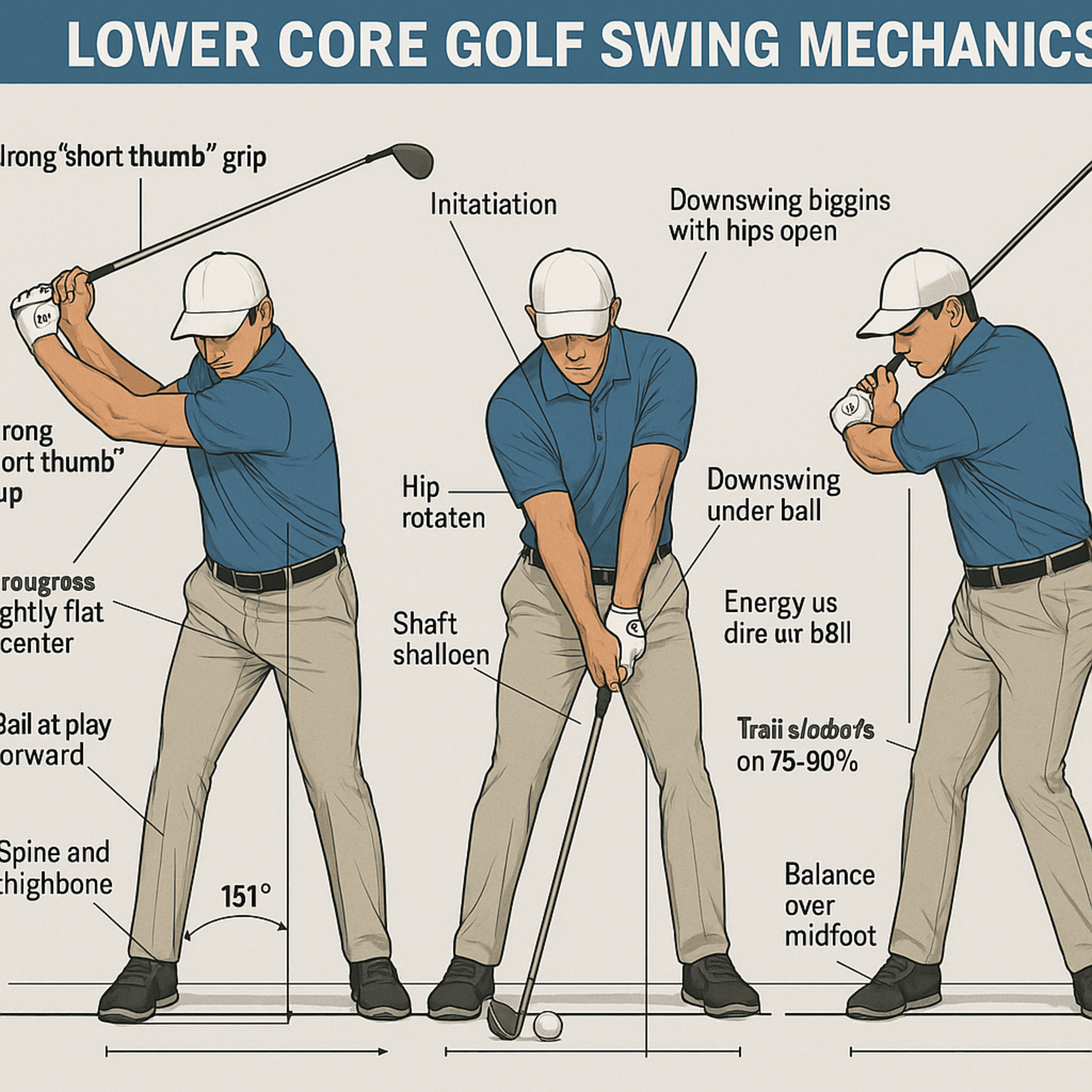#211 The Lower Core Golf Swing: Techniques and Balance
- Author
- Golf247.eu
- Published
- Fri 02 May 2025
- Episode Link
- https://podcasters.spotify.com/pod/show/puttin-pro/episodes/211-The-Lower-Core-Golf-Swing-Techniques-and-Balance-e31upao
This introduces a novel theory in golf swing mechanics, suggesting that a golfer’s body proportions—and the resulting dominant body region (lower, middle, or upper body)—determine the optimal stance width and swing technique. Using the lower body region as an example, specific characteristics such as grip, address position, backswing, and downswing are described in detail, with emphasis on midfoot balance and the use of horizontal and rotational ground forces. This analysis is based on many years of research and the observation of successful golfers.
According to various sources, several fundamental mechanical principles define the Lower Core golf swing. These principles focus on balance, body movement, and specific grip and swing techniques.
Here are the key mechanical principles of the Lower Core golf swing:
Wide Stance: Lower Core golfers typically adopt the widest stance of all core types. This wide base influences the overall swing mechanics.
Full Body Engagement: Lower Core players use their entire body throughout the swing motion.
Strong Grip: At address, they employ a strong grip with noticeable shaft lean and shoulder tilt.
Short Thumb Grip: Lower Core players use a “short thumb” grip, where the left thumb (for right-handed players) rests between the middle and upper phalanges of the middle finger. This grip promotes greater shaft lean and supports the strong grip position. The left thumb barely extends down the grip, and the knuckles are aligned diagonally over the shaft rather than parallel. This positions the club more in the fingers than the palm, naturally shortening the swing arc.
Spine and Femur Alignment: At address, the angles of the spine and femur align to approximately 151 degrees relative to the ground.
Ball Position: The ball is positioned between center and slightly right of center, due to the forward shaft lean. The shaft points toward the inside of the lead thigh (left leg for right-handers).
Backswing Initiation: The backswing is initiated by the upper body—shoulders, arms, and hands rotate as a unit.
Hip Rotation in Backswing: The hip rotation is deep but restricted due to the wide stance. The lead knee points toward the front of the ball.
Upper-Lower Body Separation: During the backswing, the upper body separates the most from the lower body.
Shoulder Plane at the Top: At the top of the backswing, the shoulder plane flattens slightly, or the player bends the knees to level the shoulders.
Center of Mass Shift: The center of mass shifts over the trail hip. The trail hand remains low, with the forearm vertical.
Downswing Initiation: The downswing begins with the rotation of the hips and shoulders, followed by the arms and hands—reversing the backswing sequence.
Elbow Movement in Downswing: The trail elbow is tucked into the lead hip (similar to Ben Hogan's motion).
Club Shaft Movement in Downswing: The shaft flattens during the downswing.
Shaft Position at Impact: At impact, the shaft points toward the lower body region.
Hip Opening at Impact: The hips are 75–90% open at impact.
Energy Transfer: Energy is transferred “under” the ball, with the clubhead staying on the target line.
Balance: Lower Core golfers maintain balance over the center of their arches throughout the swing. They generate power from the ground using horizontal and rotational ground forces, with minimal vertical force.
In summary, the Lower Core swing is characterized by a wide stance, a strong “short thumb” grip, a sequential movement starting with the upper body during the backswing and the hips during the downswing, efficient use of the entire body, and consistent balance over the arches of the feet.
